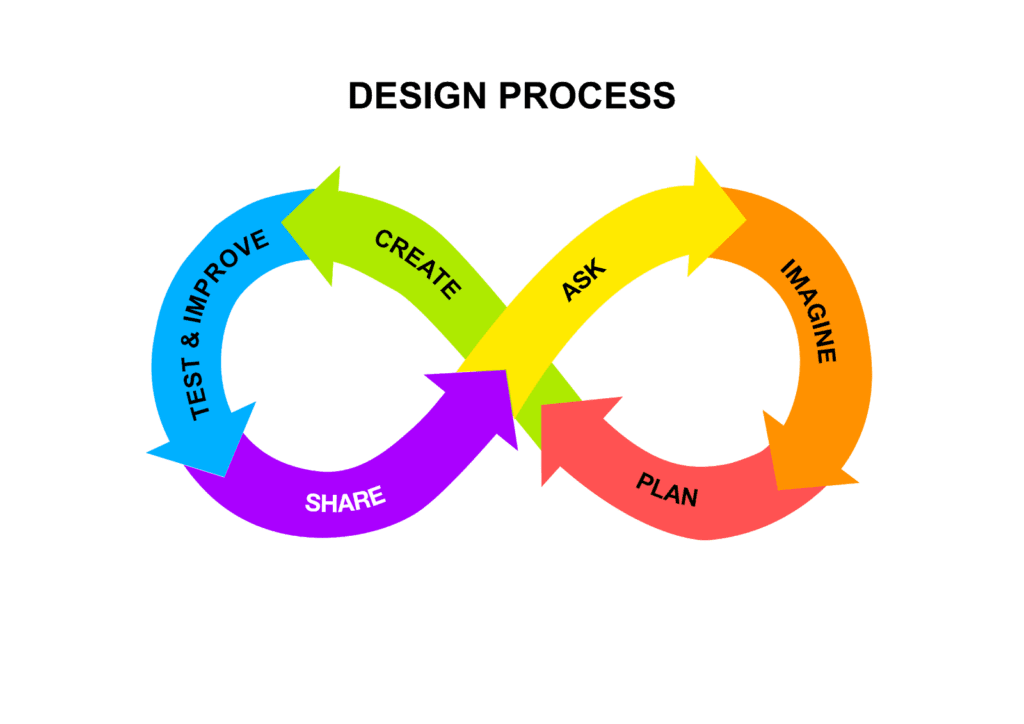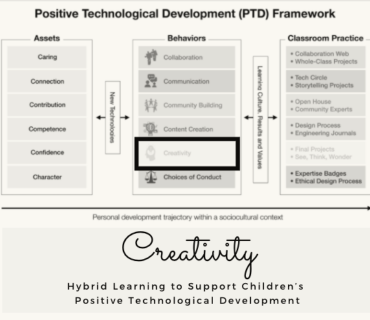
This blog post is part of a six-part series of posts about supporting children’s Positive Technological Development through hybrid/distanced learning.
Full Story
Creativity
How can we engage children in personally meaningful creative expression through technology?
Creativity is one of the most important skills we hope to support in young children, but one of the most difficult to teach. Although most people can easily recognize and identify when children are engaging in creative work, education researchers have a hard time even defining what creativity is, and how to measure it (e.g., Cowan, 2006; Patston et al., 2017). Perhaps this is because of the diversity of approaches, topics, and skills inherent to creative thinking. After all, part of creativity is innovation and trying to explore something that’s never been tried before.
In one study, researchers asked 64 artists, designers, and creative professionals from a variety of domains to describe their conceptions of creativity. The result was, perhaps predictably, 64 different conceptions of the term. However, they did all agree on one important factor: a creative person should have many ideas (Glück, Ernst, & Unger, 2002). Although this finding might seem simplistic, it speaks to the deep connection between creativity, idea construction, and learning.
You may have heard the popular learning goal of makerspaces and coding clubs around the world, to engage children in “creation, not consumption” of their own artifacts and designs. This concept has roots in computer theorist Seymour Papert’s (1980) pioneering theory of Constructionism, the idea that children develop new ideas when they create (and destroy, and remix) objects in the digital world. Papert was very specific about this digital aspect of creation, because although physical exploration also contributes to learning (for that theory, you can check Papert’s inspiration source, Piaget’s theory of Constructionism), digital environments offer the power and flexibility to control everything about their creative construction–even things like the rules of physics. The power to critically explore how familiar events might change in unfamiliar circumstances (like watching a ball “fall” in zero gravity, for example) is one example of how digital experiences can spark powerful creative ideas. This is why creative digital construction captivated Papert’s imagination, and spurred a digital learning revolution in our lifetimes.
An important aspect of Papert’s Constructionism is that children “learn by doing”. What does it mean for children to learn-by-doing with technology? Elsewhere in this blog series, we talk about Bers’ (2012) distinction between playground- and playpen-style tech tools: tools that inspire children to create their own digital content, and tools that limit children’s options to reinforce a specific idea or approach, respectively. With playground platforms, we see children engaging in creative activities of their own design, rather than exploring someone else’s design concept.
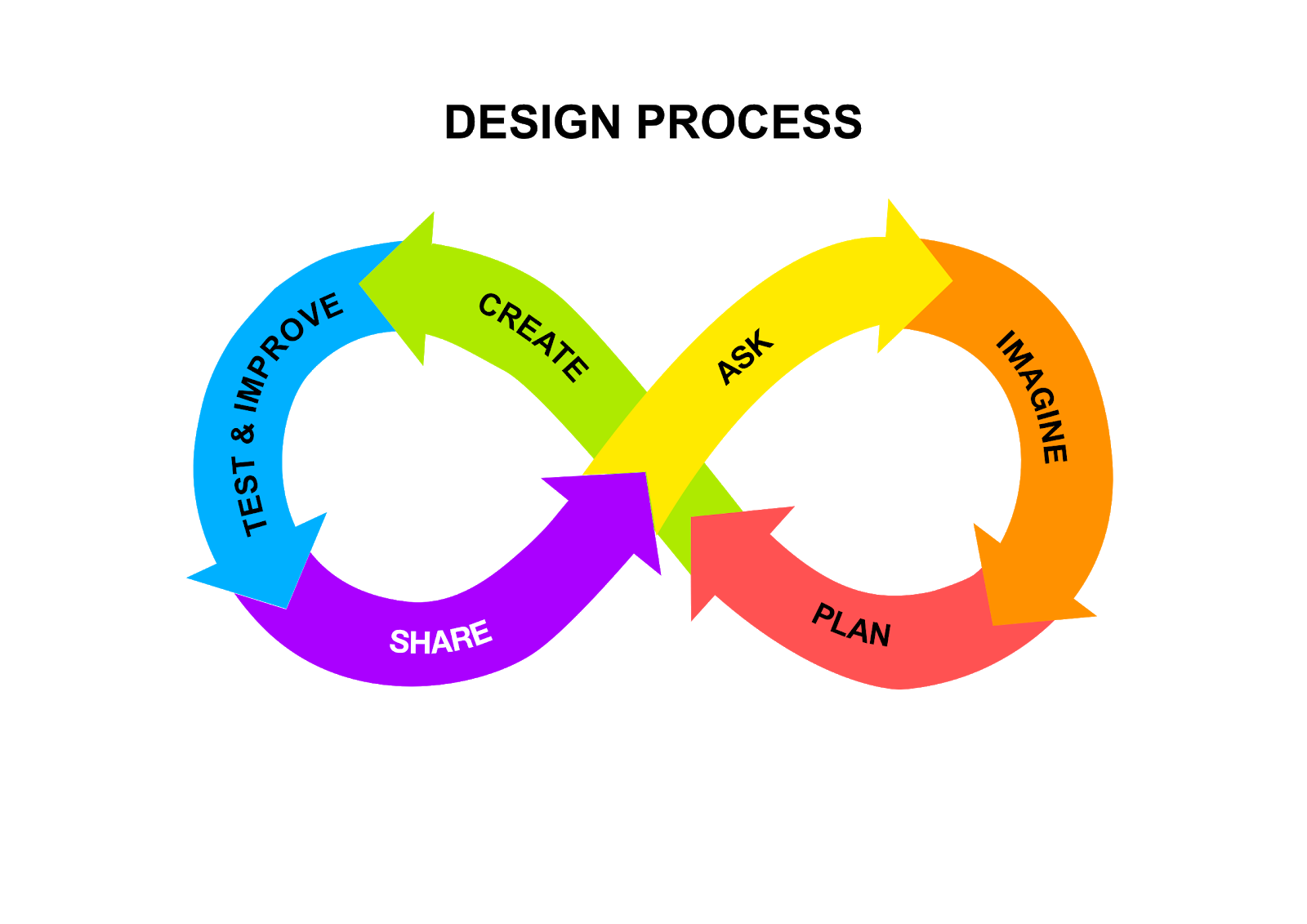
Figure 1. Design Process anchor chart, from DevTech Research Group’s Coding as Another Language Curriculum. Source: https://sites.tufts.edu/codingasanotherlanguage/curricula/pre-kindergarten-kibo/
One way to recognize when children are engaging in creative work is through the lens of the Design Process (see Figure 1). The steps of the process may look different depending on which model you use, but they all describe the progression from having an idea through stages of planning, creating, testing and refining, and finally to the final step of sharing your creative work with others. Although the specific skills and even the order of steps may change for each designer (or even each individual project), the process is roughly the same for professional and child designers, and applies to creative work in the fields of writing, science, engineering, creative performance, and more.
The beauty of the design process is that it positions technology as a platform to achieve a design goal, meaning computers become an expressive medium in children’s toolkit alongside paints, clay, and craft materials (Resnick, 2006). This makes creative technology platforms even more powerful, because they can incorporate more familiar design experiences (e.g., from art, music, and drama) and engage learners and educators who may feel uncomfortable with traditional STEM fields (Robelen, 2011).
Creativity and the Positive Technology Development Framework
Given the importance of creativity for learning, how can we provide creative opportunities that are educational as well as expressive and engaging?
In the PTD framework, creativity is connected to the character asset of confidence. If you are struggling to support creativity in your learning space, the first place to start might be to build learners’ confidence to explore and try new things with the technologies available to them.
For example, educators may relate to the experience of presenting an exciting, open-ended creative challenge, only to have their students confused about what to create, or worse, directly reproduce the example. Similarly, in Amanda’s role as the program coordinator during the launch of the ScratchJr app, she heard concerns from teachers and parents that their children were merely decorating characters and not engaging creatively with coding. Fortunately, this kind of creative free-play is critical for children’s first experiences with new technology (e.g., Strawhacker, Lee, & Bers, 2018), and children usually graduate beyond familiar play patterns to new explorations when they have been triggered by curiosity, surprise, or even awe (e.g, Colantonio & Bonawitz, 2018). You can’t predict when inspiration will strike learners, but you can “stack the odds” by providing a wealth of inspiration sources in their learning environments.
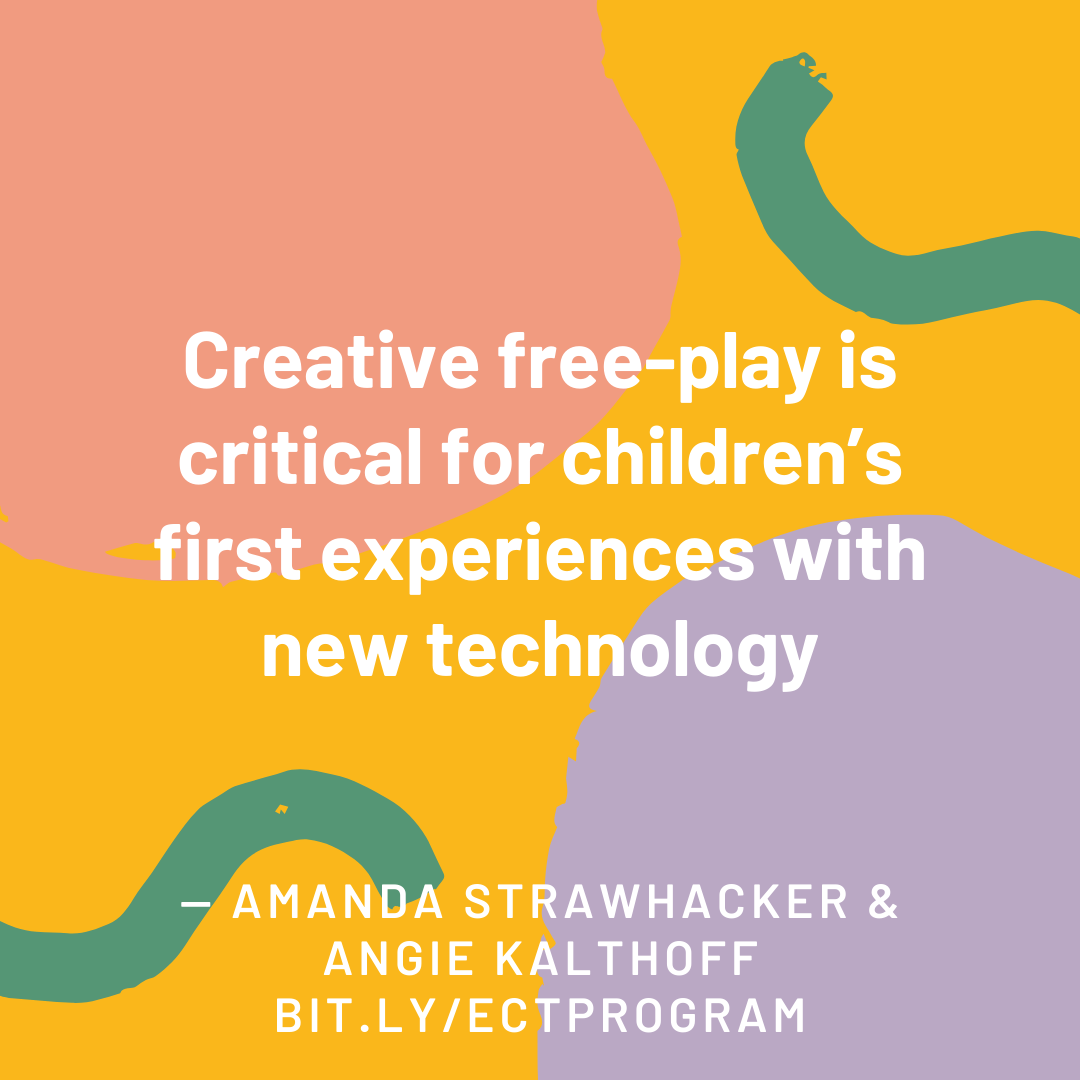 When developing the Early Childhood Makerspace at Tufts University, Amanda and her research team were careful to follow recommendations from arts education to present a variety of tools and materials, in addition to a range of in-progress and completed works showing how to use these tools and materials in new ways (Strawhacker & Bers, 2018). Structures made with upside-down LEGO bricks, sketches showing different textures and surface-rubbings made with one crayon, and three different kinds of “dancing robots” made with different robots and coding languages are just some of the ways we attempted to spark wonder–and thus, creativity and learning–in young children. Providing a stimulating environment, with a plurality of inspirational resources to show diverse interpretations of a task, can support rich creativity that deepens and engages learning (Piske et al., 2017).
When developing the Early Childhood Makerspace at Tufts University, Amanda and her research team were careful to follow recommendations from arts education to present a variety of tools and materials, in addition to a range of in-progress and completed works showing how to use these tools and materials in new ways (Strawhacker & Bers, 2018). Structures made with upside-down LEGO bricks, sketches showing different textures and surface-rubbings made with one crayon, and three different kinds of “dancing robots” made with different robots and coding languages are just some of the ways we attempted to spark wonder–and thus, creativity and learning–in young children. Providing a stimulating environment, with a plurality of inspirational resources to show diverse interpretations of a task, can support rich creativity that deepens and engages learning (Piske et al., 2017). There are many (perhaps infinite) pathways to creativity. Below are some ideas for supporting your students’ confidence to explore a creative endeavor:
-
Model how to think out loud, especially during unstructured design activities where there may be no “right” answer
-
Model how to evaluate your own design choices, including any design constraints or user needs if you are building something to solve a problem in your classroom or community
-
Practice radical acceptance of children’s ideas. If they need help with the confidence required to come up with original ideas, let them be the “creative director” of predictable, everyday tasks, and then let those ideas travel into children’s free play/art/design
If children have real trouble getting excited about design challenges, they can still tap into their creativity and computational thinking with a little help from favorite storybooks and films. Researchers Milto et al. (2020) have outlined Novel Engineering, their evidence-based approach to K-8 engineering design challenges that are rooted in literature explorations, drawing on familiar story plotlines to inspire children to design their own solutions for challenges faced by the protagonists in their chosen stories (e.g., a way for Rapunzel to escape her tower without having to use her hair). Similarly, the Coding as Another Language curriculum developed at DevTech engages children in narrative and expressive play to support their technology creations. Older students may appreciate the Creative Computing Curriculum, which similarly builds on students’ personal interests to support their exploration of the Scratch coding language. Fostering this kind of creative play with challenges from familiar story contexts can help prepare children to apply the same creative design thinking to unstructured challenges they may encounter in real life.
Creativity in Context
In what kind of context can young children create? Why is creativity important for your students?
In the previous section we described ways to find sources of inspiration in your child’s life, such as storybooks, examples of other people’s creative projects, or even daily activities that spark curiosity, and use those to start design-based conversations and project brainstorms. But where do you start once you have a great design idea?
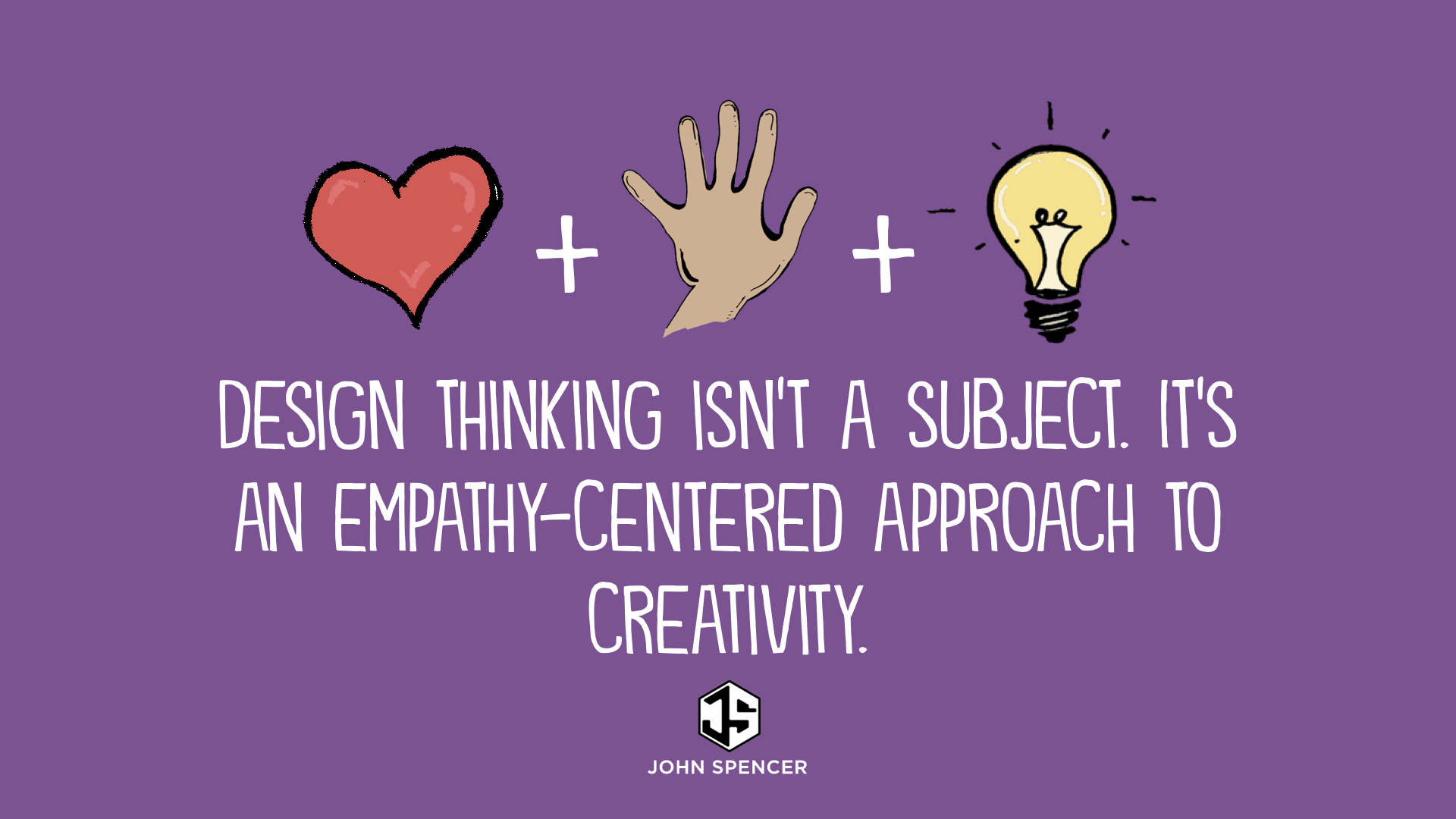
Figure 2: What is Design Thinking? Source: https://spencerauthor.com/what-is-design-thinking/
In addition to being a great tool to model how design happens, the Engineering Design Process can be a great tool to teach how to engage in design practices:
-
Start at any step in the process – Although it’s great for kids to learn the whole process, no need to follow each step in order. Professional designers bounce around based on their inspiration and creative direction, so if your kids are excited to build, maybe you can start at the “create” step and work backwards if you decide you really need to think of a plan first.
-
Try comments like: “I see you are working on a test of your design. I wonder if you will try to plan out different kinds of designs later.”
-
-
Iterate, iterate, iterate – rather than quickly accepting designs as “finished”, encourage kids to refine, improve, and gather feedback on their designs. Not only does this strengthen the overall project itself, this helps children practice perseverance, and learn to take critiques about their work as constructive suggestions rather than criticism or failure.
-
Try questions like: “What would you have done if you had more time? Is there anything you want to change the next time you work on this?”
-
Invite kids to make a 1-2 question “survey” to ask friends for helpful feedback, such as “what do you think of the wheels on the bottom of my structure?”. This can be a fun social and confidence-building task for kids, and also helps keep comments constructive and focused on aspects of the design that are possible to change.
-
-
Use an “empathy first” approach – designing a toy, game, or solution for a user other than yourself requires designers to use empathy and perspective taking.
-
Try questions like: “Who is this for? Imagine you are this person/character. What would you need to solve this problem?”
-
Watch for our next post, part 2, to understand how to bring creativity into your teaching practice.

